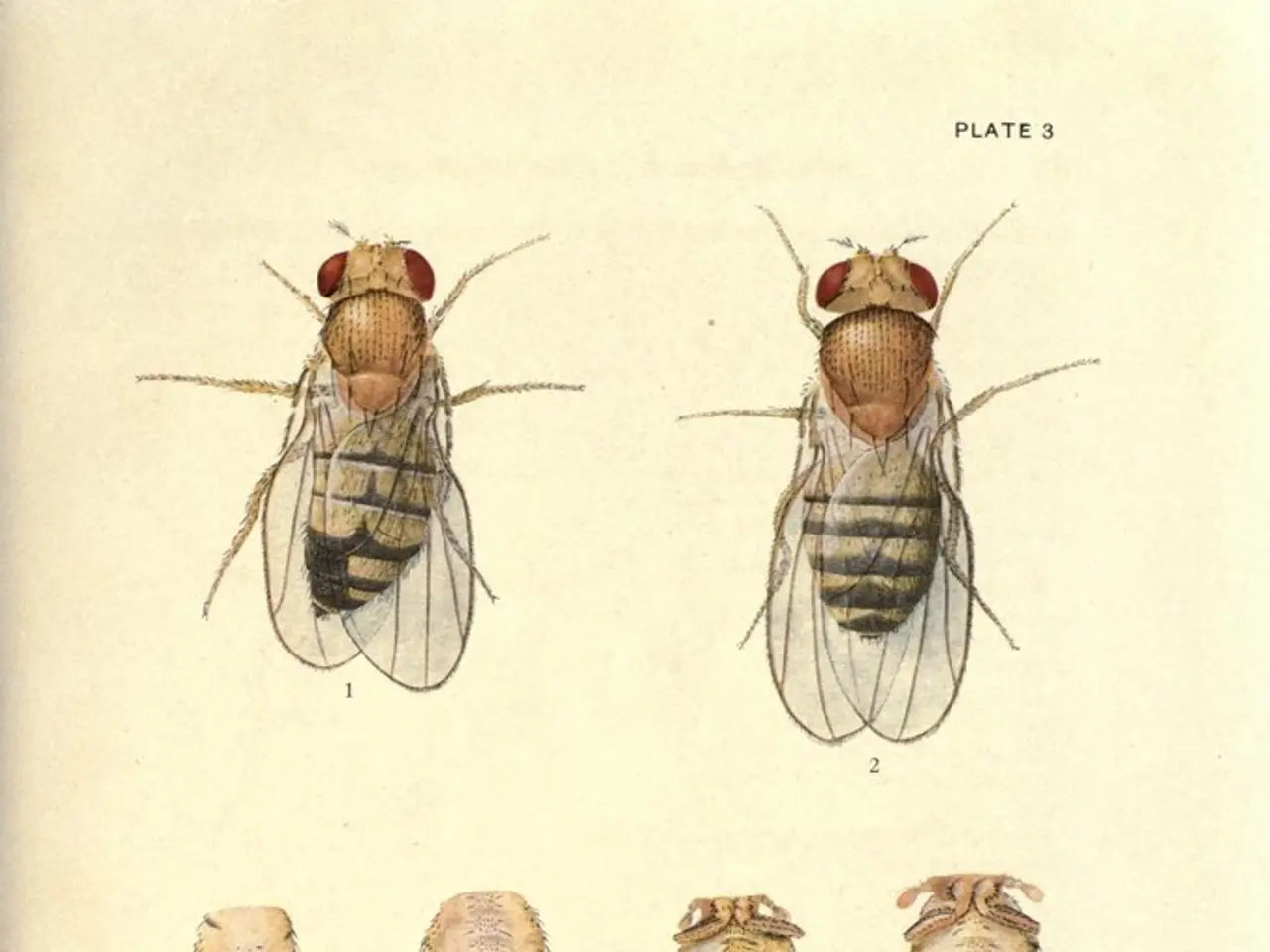Stinging Encounter with Wasps: Delving into Allergies Caused by Insecticides
For individuals with a diagnosed insect venom allergy, managing the risk of potential reactions is crucial. This article provides an overview of the essential steps for prevention, treatment, and long-term management.
Diagnosis and Identification
A diagnosis of an insect venom allergy is typically made through a blood test or skin test by a doctor. Identifying the offending insect and confirming venom sensitization through skin tests or specific IgE helps counsel avoidance and choose appropriate treatment options, including immunotherapy if indicated.
First-line Treatment: Epinephrine
In the event of a systemic allergic reaction (anaphylaxis) to an insect sting, the first-line treatment is immediate intramuscular epinephrine. Additional measures such as supplemental oxygen, IV fluids, airway support, and adjunctive H1/H2 antihistamines and corticosteroids may also be required, but epinephrine is life-saving.
Self-Treatment Preparedness
Patients with a history of systemic sting reactions should carry an epinephrine autoinjector at all times and have an emergency action plan. They should be trained to use the autoinjector promptly in case of a reaction.
Venom Immunotherapy (VIT)
Venom immunotherapy involves regular injections with standardized insect venoms to induce long-term tolerance in sensitized patients. Typical candidates for VIT are those with a history of systemic (moderate/severe) allergic reactions to Hymenoptera stings and evidence of venom sensitization. VIT reduces the risk of systemic reactions on future stings substantially, with reported protection rates of roughly 77–84% for honeybee venom and 91–96% for vespid (wasp/Yellowjacket) venom.
Practical Points
Testing before VIT should confirm venom sensitization with skin testing and/or serum specific IgE to guide which venoms to include. Special cases, such as fire ant immunotherapy, may require different protocols.
Limitations and Uncertainties
There is no validated biomarker to reliably predict who can stop VIT safely, and decisions about stopping are based on clinical factors and shared decision-making. Protection is higher for vespid venoms than for honeybee venom, and some patients may need longer or lifelong therapy for adequate protection.
Prevention and Safety Measures
To avoid the risk of stings, allergy sufferers should avoid walking barefoot or with open shoes over the meadow, not have breakfast outside in the summer, and not use perfumed cosmetics. Securing drinks, by covering bottles and glasses and drinking through a straw, can help prevent stings. When a wasp comes dangerously close, it's recommended to stay calm and not wave arms around.
Emergency Kit
Upon diagnosis, a patient is prescribed an emergency kit containing cortisone, antihistamine, and an adrenaline auto-injector. It's crucial for allergy sufferers to always carry their emergency kit, even for short outdoor activities.
Conclusion
Specific immunotherapy can treat insect venom allergies by gradually desensitizing the immune system to the venom, offering a high safety guarantee against developing life-threatening reactions in the future. However, the therapy should be consistently followed for about three years. Once the therapy is complete and there are no additional risk factors for severe reactions, the emergency kit is no longer needed.
- The science of venom immunotherapy includes regular injections with standardized insect venoms, such as honeybee and vespid (wasp/Yellowjacket), to induce long-term tolerance in sensitized patients.
- In the realm of health-and-wellness and mental-health, individuals with chronic diseases like insect venom allergies might benefit from supplements to support overall wellbeing and stress management.
- To prevent the occurrence of skin-care issues, those with insect venom allergies are advised to secure their drinks, cover bottles and glasses, and drink through a straw, as well as avoid using perfumed cosmetics to minimize the potential for stings.
- Regarding fitness-and-exercise, it's essential for patients with an insect venom allergy to carry an epinephrine autoinjector at all times, be trained to use it promptly, and follow an emergency action plan in case of a reaction during physical activity.
- Nutritional considerations for managing a diagnosed insect venom allergy might include a well-balanced diet that focuses on whole, nutrient-dense foods to support the immune system and promote overall health and wellness.




